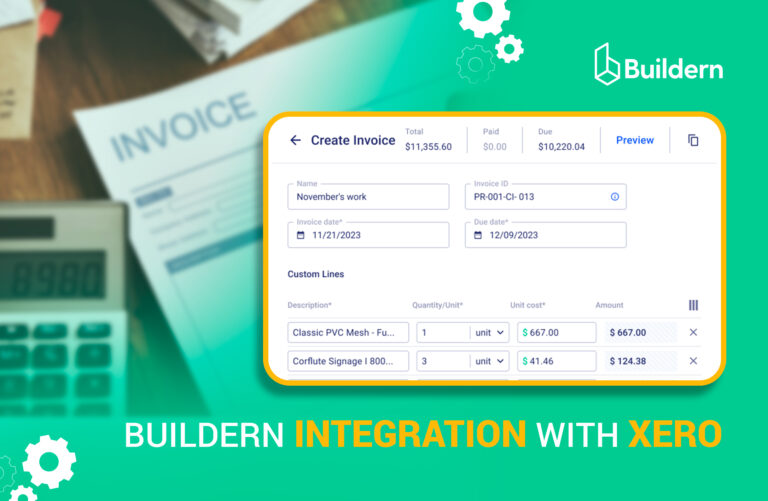RFIs Without the Backlog: Digital Workflow Best Practices

Slow request for information (RFI) cycles create real pressure on construction projects. A request that waits too long for a response holds back subcontractors, interrupts schedules, and leaves owners questioning progress. In some cases, one unanswered RFI is enough to stall several trades and trigger disputes that grow into costly claims.
I have seen the pattern too many times. Information ends up spread across email chains, spreadsheets, or even paper notes, and with no central place to track responsibilities and deadlines, construction RFIs pile up. What should be a quick clarification turns into a backlog that drags on for weeks.
This is exactly why I put together the practices in this guide. They come from what has worked best for our team and what consistently helps us keep requests visible and moving. When managed well, the process not only avoids backlogs but also eases collaboration by reducing the tension building up between field crews, office staff, and owners.
Table of Contents
- Why RFIs Become Backlogged in Construction Projects
- Digital Workflow as the Backbone of RFI Management
- Best Practices for Streamlining Construction RFIs With Digital Workflows
- Standardize RFI Templates and Data Fields
- Create Automated Routing and Role-Based Approvals
- Set Clear Deadlines and Response SLAs
- Link RFIs to Supporting Documents Directly in the Workflow
- Enable Real-Time Notifications and Mobile Access
- Use Status Tracking and Dashboards
- Maintain a Centralized Log With Searchable History
- The Future of Construction RFIs: Smarter Automation and AI

Why RFIs Become Backlogged in Construction Projects
RFIs should move fast, but on most jobs, they don’t. I’ve seen them stack up until the backlog slows the entire schedule. In my experience, the slowdown almost always comes from how the process is handled, not from the idea of RFIs themselves.
Backlogs rarely appear overnight. They grow slowly as unanswered questions accumulate. A few days of delay on each request eventually snowballs into weeks of lost productivity. I’ve watched field teams improvise to keep progress growing, only to introduce errors and rework that cost more in the long run.
At that point, restoring order often takes extra meetings, resources, and sometimes even contract negotiations. Having faced this cycle multiple times, I know how critical it is to put clear workflows in place before the backlogs start affecting the entire project.
Communication Gaps Between Field and Office
Construction crews raise questions when drawings don’t match what’s in front of them. If the request doesn’t make it across to the office quickly, it sits. The field thinks the office has it. The office may not even know it exists.
This is a standard procedure I’ve seen among construction teams. When this happens, even simple tasks can become time-consuming. Workers may stand by waiting for clarity, and equipment sits unused. Office staff may assume progress continues, not realizing the field is stuck. The longer the silence lasts, the more expensive the downtime becomes.
Multiple Stakeholders Using Different Tools
Some teams keep RFIs in email threads, while others update a spreadsheet or may even use paper notes. Each person tracks progress in their own way. That means no one has the full picture. A simple request gets lost between systems, and by the time someone follows up, the deadline has already passed.
Such mismatched tools create confusion and waste time. A manager might check one system and assume an RFI is answered, while another stakeholder insists it is still pending. Conflicting records damage trust between parties and delay decisions further. Projects end up relying on phone calls or in-person reminders just to confirm status.
Lack of Accountability and Tracking
Even when an RFI is logged, it’s not always clear who should act on it. Designers think engineers will reply, while those expect input from subs. In the meantime, work stays on hold. Without names and deadlines tied to each step, the request lingers. Modern systems fix this by assigning roles directly. For example:
- Assignees provide the answer.
- Managers oversee the process and push when things get stuck.
- Viewers stay informed and can comment.
Such a structure prevents drift. Everyone knows what they owe, and the system tracks whether it gets done.
When responsibility is documented, it is harder for anyone to claim they didn’t know. Notifications keep everyone aware of their part in the process, and the transparency ensures accountability across all levels of the project.
Digital Workflow as the Backbone of RFI Management
A digital workflow pulls the process into one system, cutting out the extra steps that slow projects down. Instead of chasing updates across emails, calls, or spreadsheets, teams work from the same platform with the same information.
Centralization matters. Each RFI is logged, assigned, and tracked in one place. Everyone sees the status, removing the guessing whether a request was sent, reviewed, or answered. As a result, turnaround improves because the back-and-forth is reduced.
Accountability and accuracy also improve when the process is structured properly. Tying roles directly to each RFI has made a big difference in our projects. Everyone sees their name, deadline, and responsibilities in the system, which removes any doubt about who needs to act.
We’ve found that such transparency cuts down arguments and helps settle issues before they escalate. Instead of spending hours debating, the record speaks for itself, and the team can move forward without unnecessary friction.
Best Practices for Streamlining Construction RFIs With Digital Workflows
However, note that even with a digital system in place, RFIs can still get stuck if the workflow is left loose. Below, I suggest some best practices that helped me keep the process steady and prevent requests from piling up. Let’s take a deeper dive:
1. Standardize RFI Templates and Data Fields
An RFI without context slows everything down. Reviewers end up chasing missing details, and the cycle stretches. Standard templates make sure every request carries the same essentials: description, drawing reference, dates, and the party responsible for answering.
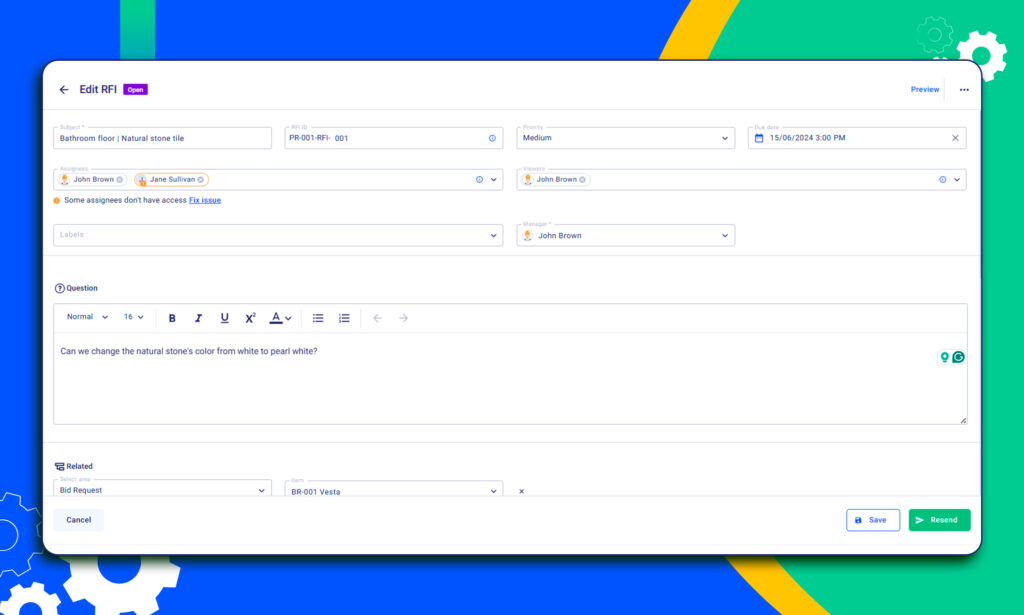
I’ve also noticed that templates make it much easier to train new hires. When everyone works from the same structure, they avoid confusion and get up to speed faster.
Consistency has helped us improve recordkeeping and audit trails on our own projects. Instead of chasing details through different formats, we know exactly where to look, and the process remains clear for everyone.
2. Create Automated Routing and Role-Based Approvals
Forwarding RFIs manually almost guarantees a delay. Emails get lost, and responsibility shifts from one person to another. Automated routing assigns the request directly to the right role, whether it’s the engineer, project manager, or consultant. The system does the sorting, and the process keeps moving without relying on memory.
Moreover, automating RFIs ensures no one is left out of the loop. Each role sees only the requests relevant to them, which reduces noise. Setting priorities ensures urgent RFIs are pushed higher.
3. Set Clear Deadlines and Response SLAs
Without deadlines, an RFI can get stuck for weeks. Setting turnaround times inside the system, often five to ten business days, can make the expectations clear. If a deadline passes, reminders go out automatically. Both the assignee and the manager see the overdue notice, keeping accountability visible.
Deadlines also help prioritize workload. Teams know exactly when a response is expected and plan accordingly, and managers can reallocate resources to avoid delays. As a result, clients gain confidence when they see issues resolved within set windows. Over time, consistent response times become a mark of professionalism.
4. Link RFIs to Supporting Documents Directly in the Workflow
When drawings or specs are missing, a simple question turns into a chain of extra messages. Linking files inside the RFI keeps the full context in one place, making it easier for the reviewers to see the request and the supporting material together. As a result, you get faster responses and avoid repeated follow-ups.
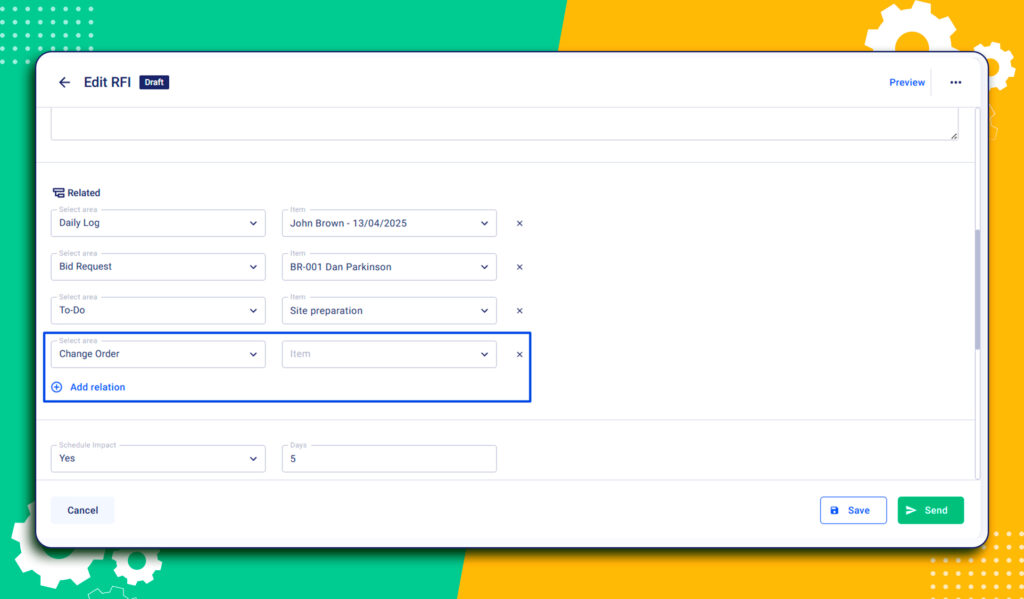
I’ve found that attaching documents directly to construction RFIs cuts down on miscommunication right away. When everyone refers to the same version of a file, there’s no risk of errors from outdated drawings or missing details. My team saves hours that would otherwise be wasted digging through shared folders, and we avoid the frustration of chasing the right file.
Over time, document linking has proven to be one of the most efficient practices, reducing mistakes and smoothing out closeout.
5. Enable Real-Time Notifications and Mobile Access
RFIs often start in the field. If they wait until someone gets back to a desk, the delay is built in from the start. Construction mobile apps let crews submit and track RFIs on site, with notifications reaching the office instantly. Work continues while the request is already moving through the system.
Real-time access ensures momentum is never lost. Crews don’t need to leave the site or stop work to log questions. Notifications keep managers informed immediately, even when they’re off-site. Such levels of visibility prevent RFIs from getting buried in inboxes. It also means responses come faster because issues feel more urgent.
6. Use Status Tracking and Dashboards
When managers can’t see the overall picture, requests fall behind without notice. Real-time digital dashboards make the status visible: open, in review, answered, or closed. This visibility helps identify issues early and gives managers a chance to redistribute workload before everything grows into backlogs.
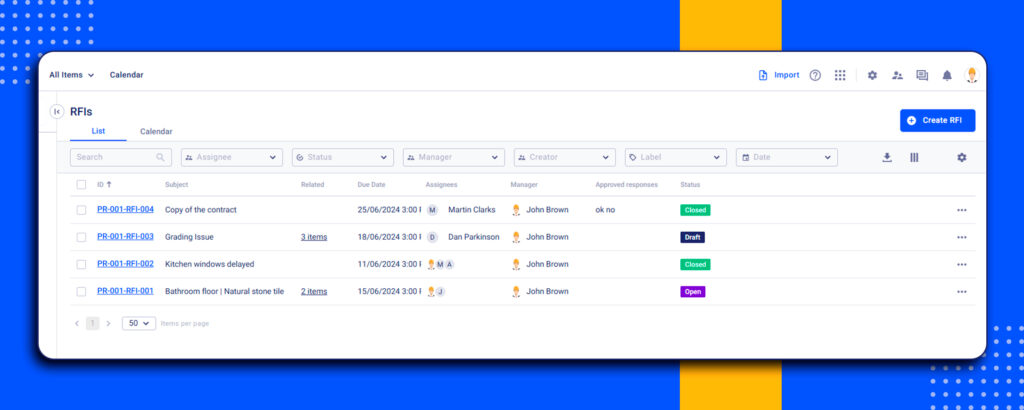
Dashboards provide quick snapshots for leadership and clients. They show me progress without requiring long explanations. Our team managers drill down into details when necessary, reducing the tension with clients by showing all requests are under control.
Thus, I know how a clear visual record adds credibility to reporting.
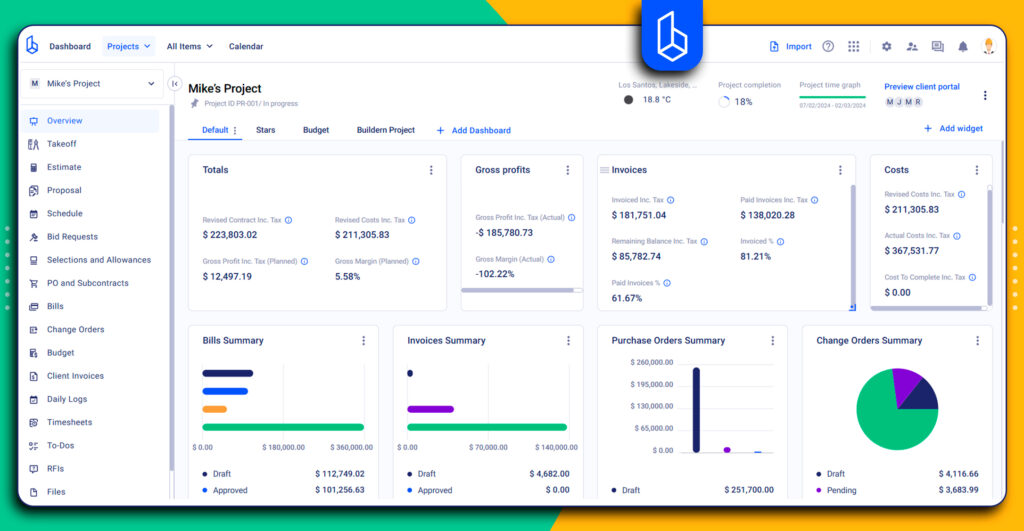
7. Maintain a Centralized Log With Searchable History
Reconstructing RFI history from scattered emails or paper files wastes days. A centralized log records every request with timestamps, attachments, and comments. That record is searchable and available whenever audits, claims, or closeouts require proof.
Logs also serve as a valuable reference for future jobs. Past RFIs show where drawings were unclear or specs lacked detail. Therefore, teams can use that knowledge to improve design reviews and planning. Centralization also strengthens compliance and risk management. A complete history ensures no one questions what happened.
The Future of Construction RFIs: Smarter Automation and AI
Digital platforms are starting to move beyond simple tracking. The next step is automation systems that learn patterns and handle part of the work without waiting for a manager to push every request forward.
One area is predictive routing. Over time, the software can see which engineers or consultants respond the fastest and direct new RFIs to them first. That reduces delays caused by sending a question to the wrong person.
Another is automatic flagging. Not all RFIs are equal. Some deal with small details, others affect cost or schedule. AI can scan the content and highlight the ones that carry a higher risk. Those get priority, so critical work does not stall.
Repetition is also common. The same questions come up on different projects, sometimes even within the same job. AI can suggest responses based on records, cutting down on duplicated effort. It also helps keep answers consistent across teams.
Recent surveys point to this shift. Dodge Construction Network reported that more than half of contractors expect to use digital solutions in their project management workflows. The role of AI cannot be neglected here either. RFIs are likely among the first targets, since the process is highly repetitive and depends on structured data.
As these systems develop, teams will spend less time chasing responses. Managers will focus on higher-value tasks, like design reviews and risk planning. Automation also improves consistency by applying rules across all projects. Contractors that adopt early gain speed advantages and reduce disputes.
What Is the Average Turnaround Time for RFIs in a Well-Managed System?
In a well-structured workflow, the turnaround time for most RFIs should range from 7 to 10 business days, depending on the complexity of the request. Straightforward clarifications, such as confirming a dimension or material specification, can be resolved within a few days. More detailed RFIs that require design team input, code checks, or coordination across multiple trades may take longer.
The key measure of a healthy system is consistency, where responses are issued within a predictable timeframe that keeps the project moving without creating bottlenecks.
Can Construction RFIs Be Linked to Project Documents and Drawings?
Yes. In fact, linking RFIs to relevant plans, specifications, schedule items, or change orders is one of the most effective ways to keep the process transparent. By attaching or referencing the exact document, both the requester and the reviewer work from the same source of truth. This reduces the risk of misinterpretation and ensures that the final response is properly documented for future reference, whether during construction or later for claims and closeout.
How Do You Prioritize RFIs When Multiple Are Open at the Same Time?
When several RFIs are active simultaneously, prioritization usually depends on:
Impact on the critical path, safety considerations, cost implications, sequence of trades, and other factors. A clear log with status tracking helps the project team quickly identify which RFIs demand immediate attention and which can follow in sequence.
Key Findings
- Delays in construction RFIs stem from poor process management, not the requests themselves. Endless email threads, spreadsheets, and unclear responsibilities cause backlogs that snowball into costly disputes.
- Digital workflows centralize accountability by logging RFIs, assigning roles, and recording actions, which shortens turnaround times and reduces finger-pointing.
- Real-time notifications, mobile access, and status dashboards keep field and office teams aligned, preventing RFIs from getting lost and providing transparency for clients.
- AI and automation are shaping the future of RFIs, with predictive routing, automatic risk flagging, and response suggestions helping contractors reduce repetitive work and disputes.


